The given floral formula belongs to:


1. Fabaceae
2. Solanaceae
3. Liliaceae
4. Brassicaceae

1. Fabaceae
2. Solanaceae
3. Liliaceae
4. Brassicaceae
What types of leaves are respectively shown in the given picture?
| 1. | Palmate and Pinnate | 2. | Pinnate and Palmate |
| 3. | Pentapinnate and Heptapinnate | 4. | Heptapinnate and Pentapinnate |
The phyllotaxy shown in the given picture is:
| 1. | Alternate | 2. | Opposite |
| 3. | Whorled | 4. | Random |
The diagram shows water hyacinth. It reproduces by the sub aerial modification of stem known as:
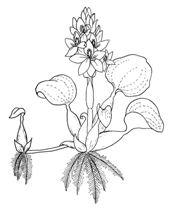
1. Runner
2. Stolon
3. Offset
4. Sucker
Match type of adhesion of stamens with example and select the correct answer from the codes given:
| Adhesion of stamens | Example | ||
| A. | Epipetalous | a. | Datura |
| B. | Epiphyllous | b. | Tulip |
| C. | Gynandrous | c. | Calotropis |
Codes
| A | B | C | |
| 1. | a | b | c |
| 2. | b | a | c |
| 3. | c | a | b |
| 4. | a | c | b |
The arrow shows structure where basal portions of the calyx, the corolla, and the stamens form a cup-shaped tube. This is called as:
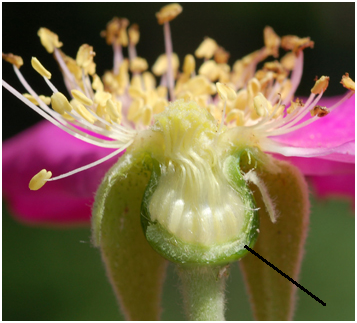
1. Thalamus
2. Gynandrophore
3. Peduncle
4. Hypanthium
A shows underwater leaves and B above water leaves in Limnophila heterophylla. This is an example of:
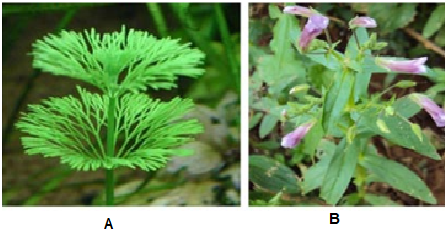
1. Norm of reaction
2. Developmental noise
3. Incomplete penetrance
4. Phenotypic plasticity
The structure shown by arrow in the given picture is called as:
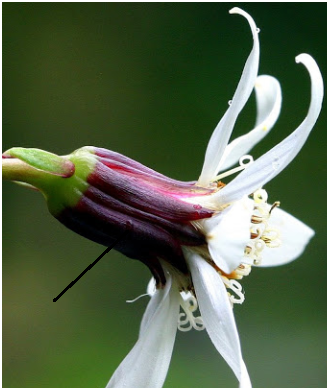
1. Involucre
2. Spathe
3. Glume
4. Epicalyx
The condition of the stamens in the given picture is:

1. Didynamous
2. Tetradynamous
3. Synandrous
4. Syngenesious
The sub-aerial modification of the stem shown below is:
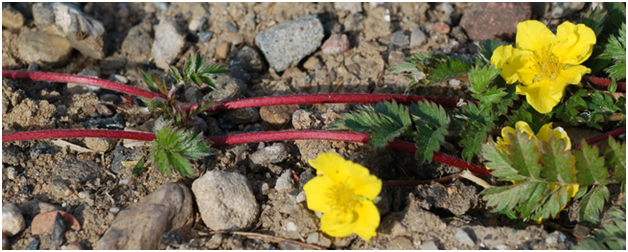
1. Stolon
2. Runner
3. Rhizome
4. Offset








